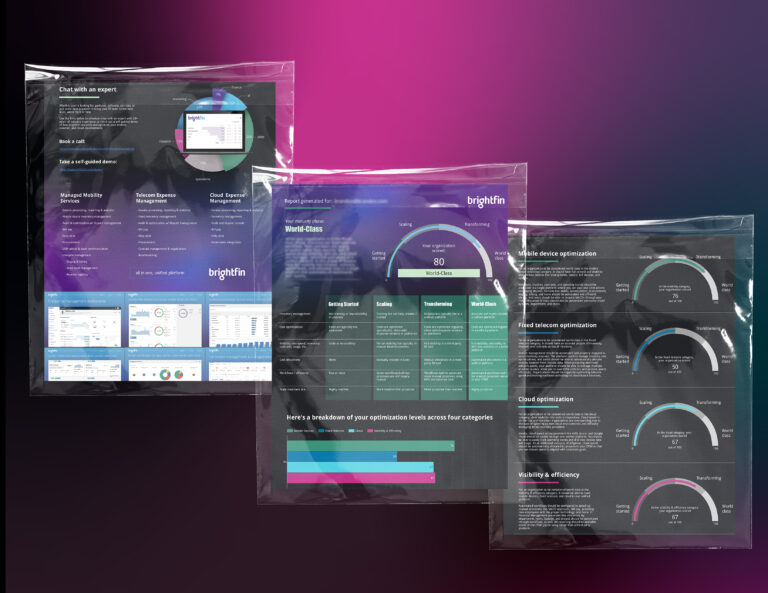Artificial intelligence (AI) has been a buzzword in the tech industry for years, but it is now becoming an increasingly important part of the technology landscape. As an IT leader, it is essential to understand how AI is changing the industry and how it can be leveraged to improve your organization’s operations. In this blog, we will explore some of the ways AI is changing the technology landscape.
The rapid pace of technological change has created a complex and ever-evolving landscape for IT leaders to navigate. With new technologies emerging all the time, it can be challenging to keep up with the latest trends and ensure that technology spending is aligned with business goals. To stay ahead of the curve, IT leaders need the right tools to provide visibility into technology spend and help them make informed decisions about where to invest resources. With the right tools, IT leaders can gain a clear understanding of their organization’s technology spending and identify opportunities to optimize costs, improve operational efficiency, and drive innovation.
Automation
Streamlining processes: AI automation enables businesses to streamline their operations by automating repetitive tasks. This reduces the time and effort required to complete these tasks manually, leading to increased productivity and cost savings. For instance, in manufacturing, robots equipped with AI algorithms can automate assembly line processes, leading to faster and more efficient production.
Error reduction: Automation reduces the likelihood of human errors. Humans can sometimes make mistakes due to fatigue, distractions, or oversight, which can have significant consequences in certain industries. By replacing manual processes with AI-powered automation, businesses can minimize errors and ensure more accurate and consistent results.
Improved efficiency: AI automation can significantly enhance efficiency by enabling faster and round-the-clock task execution. Machines powered by AI algorithms can work at a much faster pace than humans, thereby increasing overall productivity. Moreover, automation can operate continuously without breaks, contributing to uninterrupted workflows and faster turnaround times.
Task delegation: Automation allows employees to delegate repetitive and time-consuming tasks to AI systems. This frees up human workers to focus on more complex, creative, and value-added activities that require human intelligence, problem-solving skills, and critical thinking. It helps in utilizing human resources more effectively, leading to higher job satisfaction and improved employee engagement.
Predictive Analytics
Forecasting and trend identification: Predictive analytics helps businesses anticipate future events and trends based on historical data. By analyzing patterns and relationships in the data, AI algorithms can identify trends, seasonality, and cyclical patterns. This enables businesses to make accurate forecasts about sales, demand, customer behavior, market trends, and other relevant factors. Organizations can then use these insights to make informed decisions and plan their strategies accordingly.
Risk assessment and mitigation: Predictive analytics can help businesses assess and mitigate risks more effectively. By analyzing historical data, AI algorithms can identify factors that contribute to risks or potential failures. For instance, in manufacturing, predictive analytics can analyze data from sensors on equipment to identify patterns that indicate potential failures. By detecting these patterns early, businesses can take proactive measures such as maintenance or replacements to prevent costly breakdowns and minimize downtime.
Customer behavior analysis: Predictive analytics is widely used to understand and predict customer behavior. By analyzing customer data, including purchase history, browsing patterns, demographics, and social media interactions, AI algorithms can identify patterns and preferences. This enables businesses to personalize marketing campaigns, target specific customer segments, and make recommendations tailored to individual customers. By understanding customer behavior in advance, businesses can optimize their marketing strategies, improve customer satisfaction, and increase sales.
Large Language Models
Large language models are a type of artificial intelligence that has been making waves in the tech industry in recent years. These models are capable of processing vast amounts of natural language data and generating human-like responses. But how do they work?
At their core, large language models are based on a type of artificial neural network called a transformer. These networks are designed to process sequential data, like text, and make predictions based on that data. The transformer architecture was first introduced in a 2017 paper by Google researchers, and it quickly became the basis for many of the largest and most powerful language models in use today.
When a large language model is trained, it is fed massive amounts of text data, like books, articles, and websites. The model then uses this data to learn patterns and relationships between words and phrases. This learning process is known as unsupervised learning, meaning that the model is not given explicit instructions on what to learn. Instead, it learns on its own by analyzing the data it is given.
Once the model has been trained, it can be used for a variety of tasks, like language translation, text summarization, and even generating new text. To generate new text, the model is given a prompt, like a sentence or a few keywords, and it uses its learned knowledge to predict what words should come next. The output generated by the model can be surprisingly human-like, and it is often difficult to tell whether a piece of text was generated by a machine or a human.
Conclusion
AI is changing the technology landscape in countless ways. From automation to predictive analytics to personalization and cybersecurity, AI is transforming the way businesses operate. As an IT leader, it is essential to understand these changes and how they can be leveraged to improve your organization’s operations.
In conclusion, the constantly evolving technology landscape presents a significant challenge for IT leaders. To ensure that technology spending aligns with business goals and stays ahead of the curve, IT leaders must have the right tools at their disposal. These tools provide visibility into technology spend and enable informed decision-making about where to allocate resources. With a clear understanding of their organization’s technology spending, IT leaders can identify opportunities to optimize costs, improve operational efficiency, and drive innovation. By leveraging the right tools, IT leaders can navigate the complex technology landscape with confidence and make strategic decisions that position their organizations for success.






